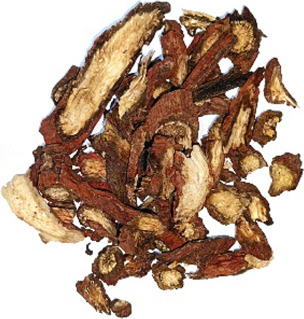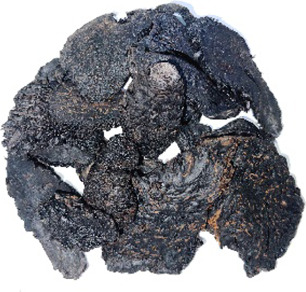TABLE 3.
Therapeutic intervention with Chinese herbs.
| Chinese herbs | |||||
|---|---|---|---|---|---|
| Name | Species and source | Components | Picture | Effects in TCM theory | Antioxidant mechanisms |
| Salvia miltiorrhiza Bunge | Lamiaceae; Salviae Miltiorrhizae Radix et Rhizome | Hydrophilic depside derivatives (e.g., danishes, salvianolic acids A–C, E–G, caffeic acid, and ferulic acid) and lipophilic diterpenoids (e.g., tanshinones Ι, ΙΙA, andΙΙB, tanshinoneA, and tanshindiols A and B) |

|
Promotes blood circulation, removes blood stasis, and reduces pain | Improves SOD, decreases the MDA, inhibits MAPK pathways, and preserves CAT activities |
| Cistanche deserticola Ma | Orobanchaceae; Cistanches herba | Total glycosides (TGs, phenylethanoid glycosides, and other glycosides) and oligosaccharides |

|
Tonifies yang qi and blood, and moistens the intestines | Reduces p53, IL-6, and TNF-α, decreases MDA, increases SOD, GSH-Px, and CAT, facilitates Nrf-2 nuclear translocation |
